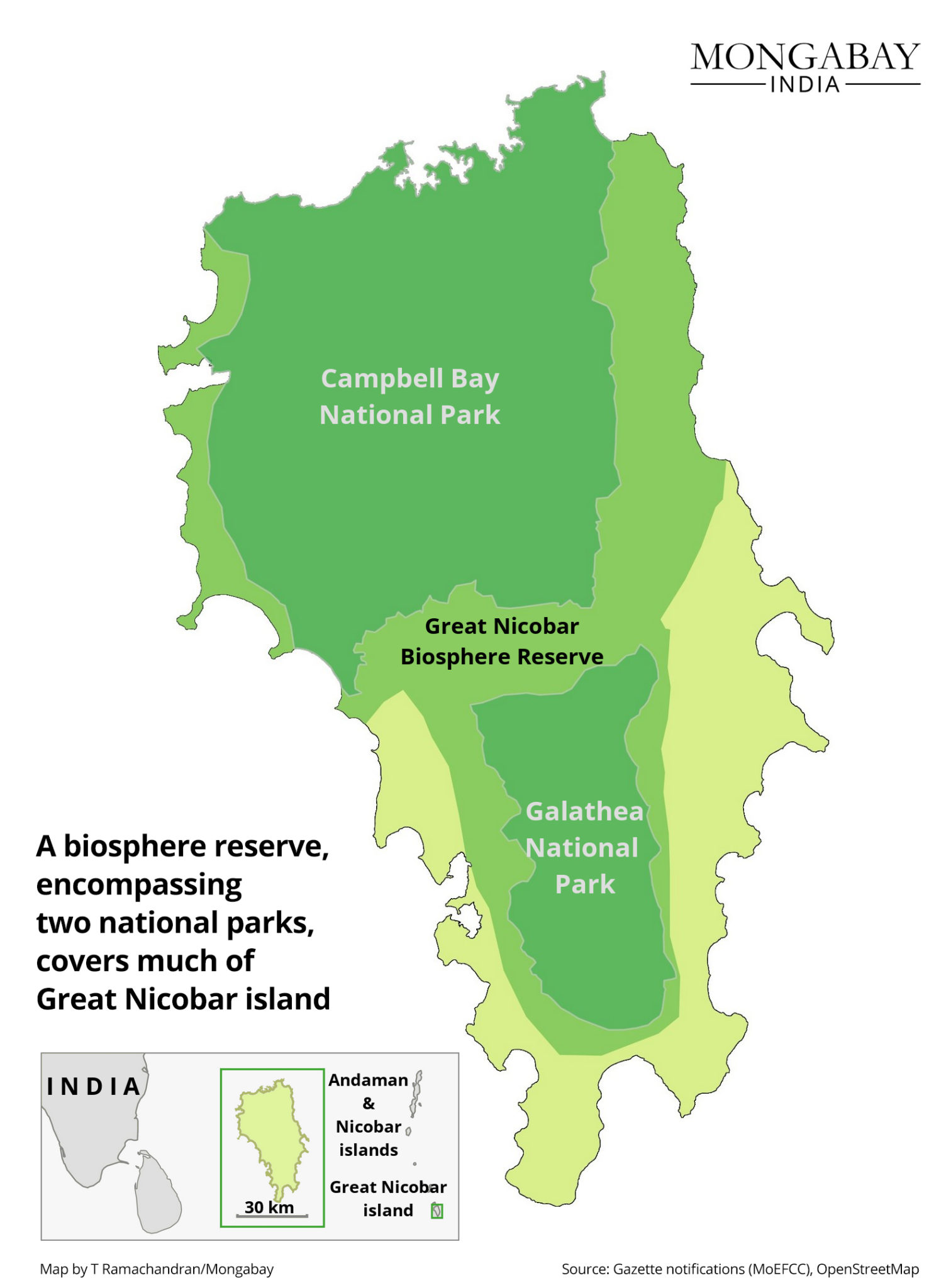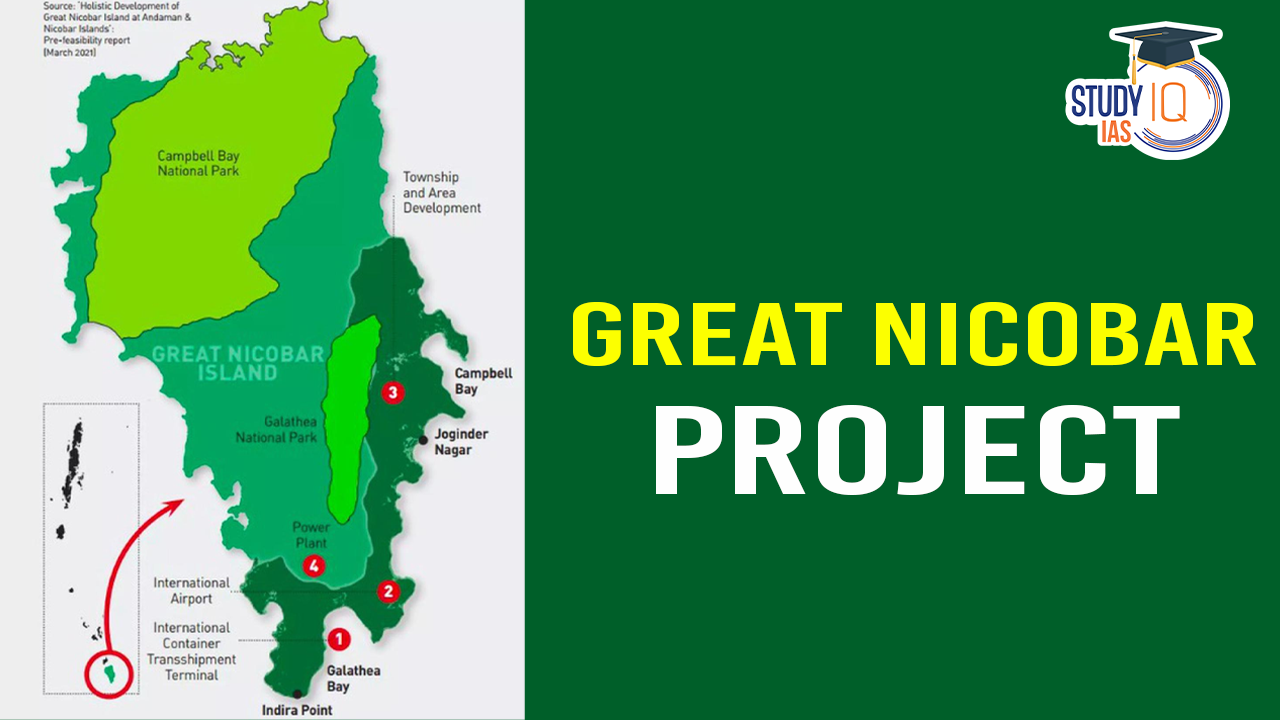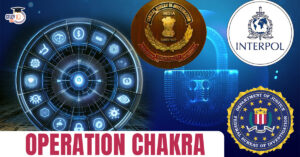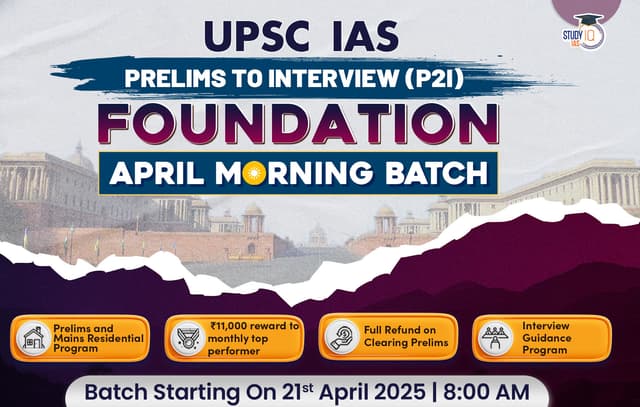Table of Contents
Context: The mega infrastructure project on Great Nicobar Island has been expanded to include an international cruise terminal and a shipbreaking yard.
- The proposed Rs 72,000 crore infrastructure project at Great Nicobar Island aims to leverage the island’s strategic location for economic and military advantages. However, it faces significant opposition due to environmental concerns and potential impacts on indigenous communities.
- The project’s progress and clearances continue to be contentious issues, with calls for thorough reviews and greater transparency.
- The opposition party called for the immediate suspension of all clearances for NITI Aayog’s mega project on Great Nicobar Island.
- They cited violations of due process, legal and constitutional provisions protecting tribal communities, and the project’s ecological and human cost.
- The party also demanded an impartial review by parliamentary committees.
About Great Nicobar Project
- It is a Mega Infrastructure Project launched in 2021 to develop the Southern tip of Great Nicobar Island in the Andaman Sea. It consists of:
- International Airport: For civilian and defence use
- Trans-shipment Port: An international container transhipment terminal (ICTT) on the eastern side of Galathea Bay.
- Power Plant: A 450 MVA gas and solar-based power plant.
- Township Development: A 150 sq km township.

New Additions to the project
- International Cruise Terminal: Envisioned to transform Great Nicobar into a “global port-led city” and a high-end eco-tourism destination and to accommodate international and domestic tourists.
- Shipbuilding and Shipbreaking Yard: Proposed on 100 acres of land with a 500-meter seafront in Campbell Bay to support repair and building activities.
- Export-Import Port: Located in Campbell Bay for importing construction materials for the Galathea Bay terminal.
Implementing Agency
Andaman and Nicobar Islands Integrated Development Corporation (ANNIIDCO).
- It was established in 1988 (under the Companies Act 1956).
- Objective: To develop and commercially exploit the natural resources for the balanced and environment-friendly development of Andaman & Nicobar.
| Great Nicobar Island |
Location and Size
Ecological and Human Elements
Andaman and Nicobar Islands
|
Issues and Impact of the Great Nicobar Project
- Controversial Notifications:
- Displacement of Indigenous Communities:
- Indigenous communities, including the Shompen tribe, will face displacement due to deforestation, infrastructure development, and land appropriation.
- Settlements and traditional foraging/hunting grounds will be destroyed.
- Neglect of Indigenous Rights:
- In May 2022, The Andaman and Nicobar (A&N) administration proposed 3 wildlife sanctuaries. No consultations were held with the tribes before granting clearances for the project.
-
-
- Coral reefs at Meroë.
- Megapode birds at Menchal.
- Leatherback turtles on Little Nicobar Island.
-
- Loss of Livelihood and Culture:
- Indigenous peoples rely on forests and marine ecosystems for sustenance, such as cultivating coconuts and betel nuts, and fishing.
- Deforestation and Habitat Loss:
- Around 8–10 lakh evergreen trees in pristine tropical forests will be cut down.
- Wildlife habitats for species like the Nicobar Megapode, crocodiles etc. will be destroyed.
- Galathea Bay is a key nesting site for Leatherback turtles, and its destruction endangers this globally significant species.
- Damage to Coral Reefs: Extensive coral reefs along Galathea Bay will be smothered out for port and construction activities.
| Shompen Tribe |
|
Project Approvals and Legal Challenges
- Clearances: Received in-principle forest and environmental clearances in October 2022.
- National Green Tribunal (NGT):
- In April 2023, NGT declined to interfere with the project’s clearances.
- Ordered a high-power committee to review clearances, but the committee’s report status remains unclear.
- An appeal against NGT’s order was dismissed in 2023.
Opposition to the Project
Ecological Concerns
- The project requires the diversion of about 130 sq km of forest land and the felling of around 10 lakh trees.
- Two wildlife sanctuaries, Galathea Bay and Megapode, were denotified to make way for the project.
- Galathea Bay, a critical habitat for the giant leatherback turtle, is listed in the ‘National Marine Turtle Action Plan’ as a protected area.
Tribal Rights Concerns
- The Tribal Council of Great Nicobar and Little Nicobar withdrew its NOC, citing concealed information about tribal reserve lands.
- Some land classified as “uninhabited” in NITI Aayog’s plan is the ancestral land of the Great Nicobarese, who have repeatedly sought to return to these lands.
- Shompen communities face disease risks due to a lack of immunity from contact with the outside world. Their settlements overlap with areas proposed for the transhipment terminal.
Social and Environmental Impact
- The local panchayat of Campbell Bay raised concerns over the social impact assessment for land acquisition for the airport.
- Researchers highlighted inadequate assessment of earthquake risks. The Andaman and Nicobar archipelago is in a seismically active region with high earthquake frequency, categorised as zone V for seismic hazard.


 New Phase of Operation Chakra to Combat ...
New Phase of Operation Chakra to Combat ...
 Bhashanet Portal : Empowering Multilingu...
Bhashanet Portal : Empowering Multilingu...
 Soyuz Aircraft: History, Design and Sign...
Soyuz Aircraft: History, Design and Sign...





















